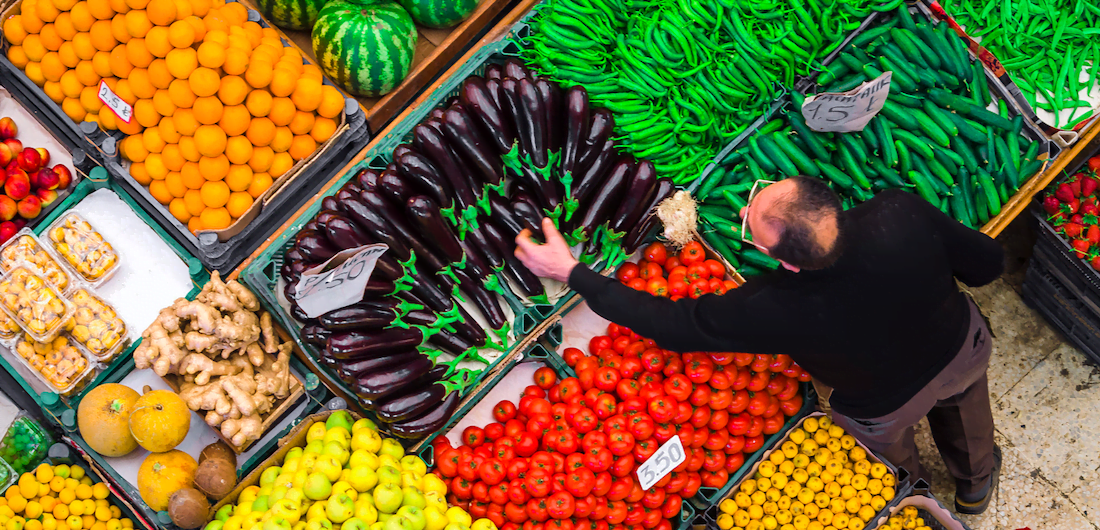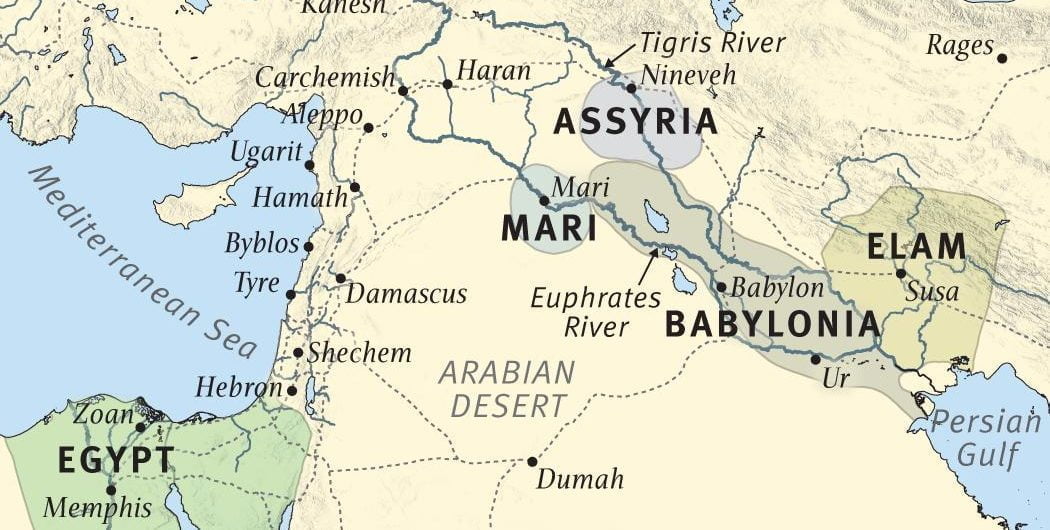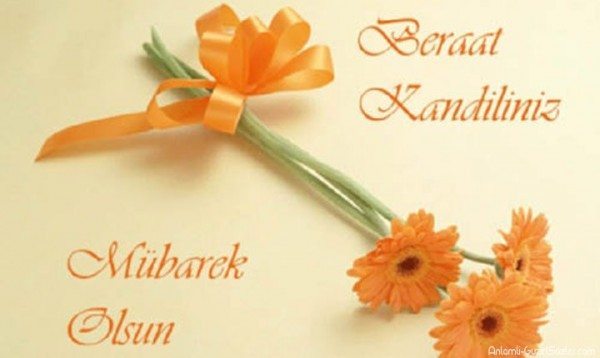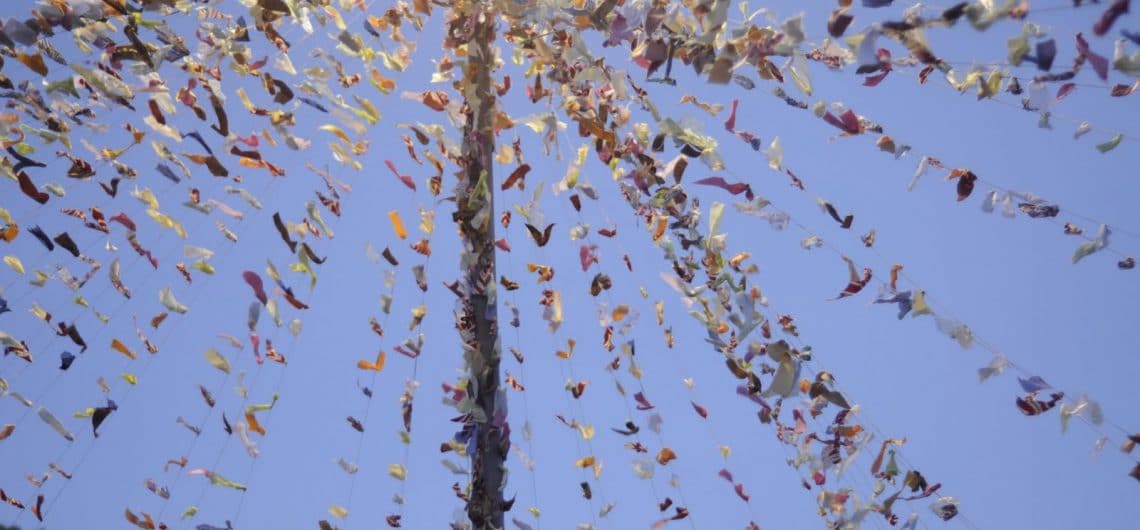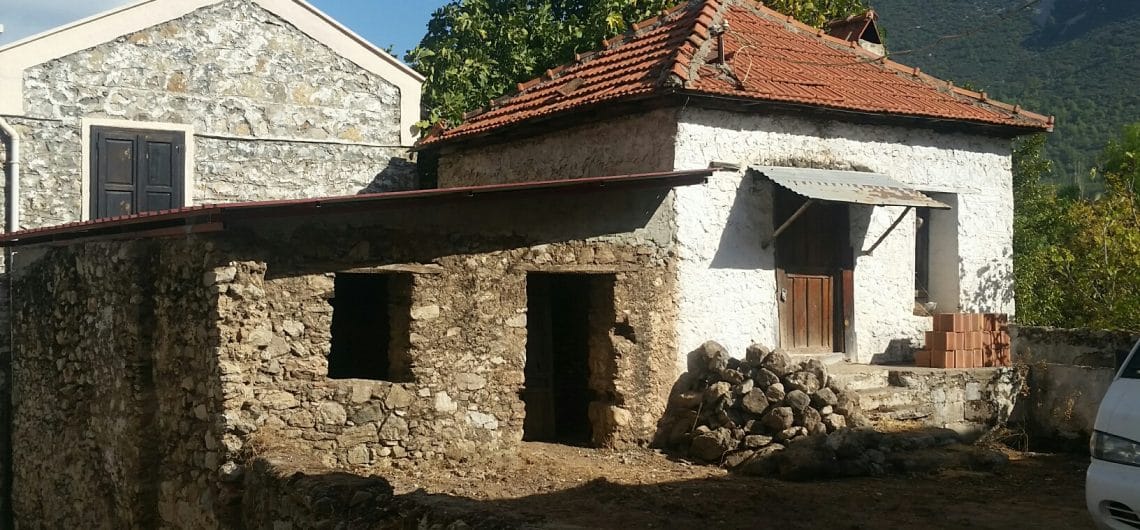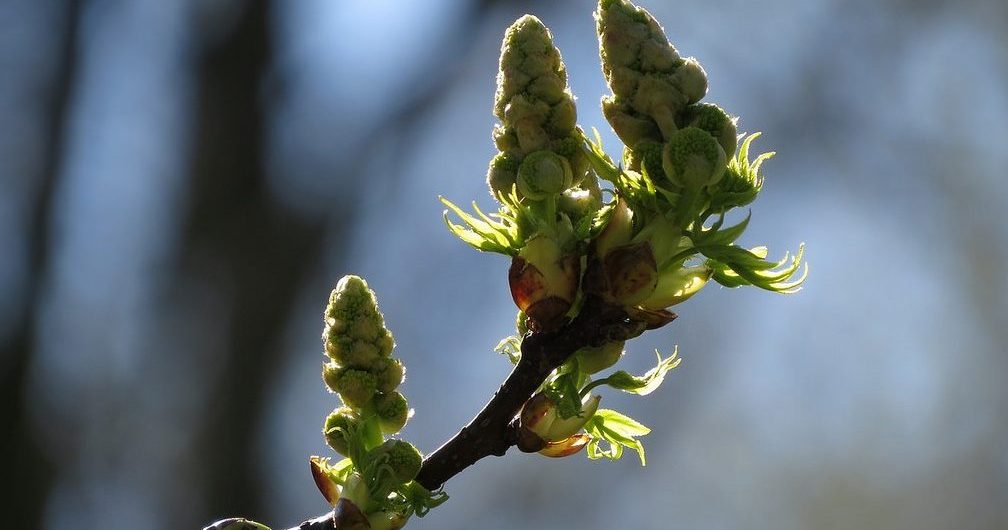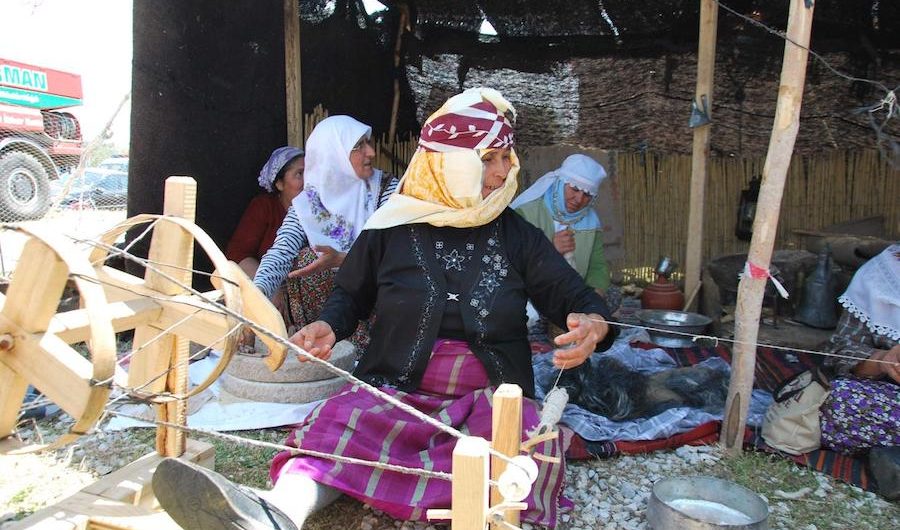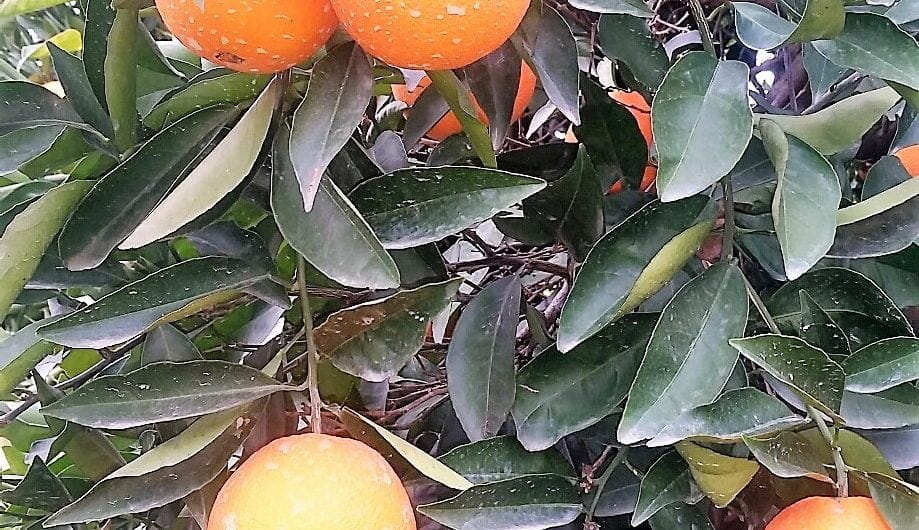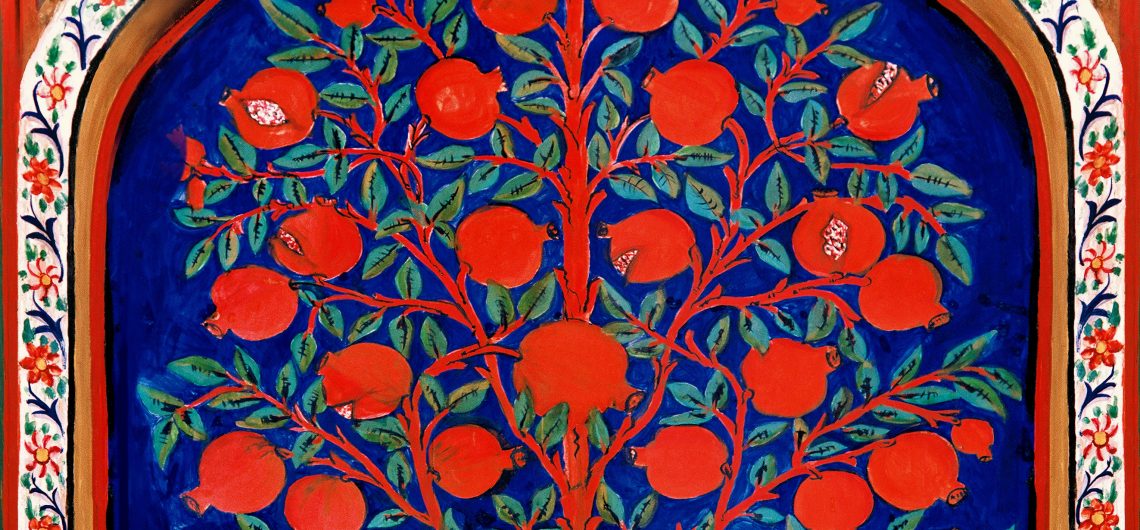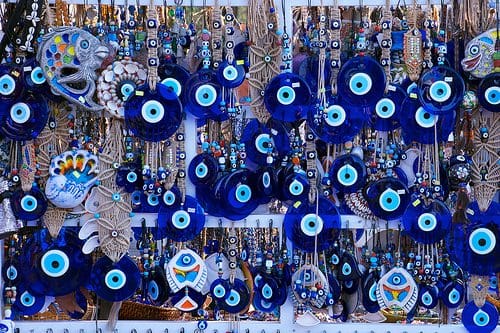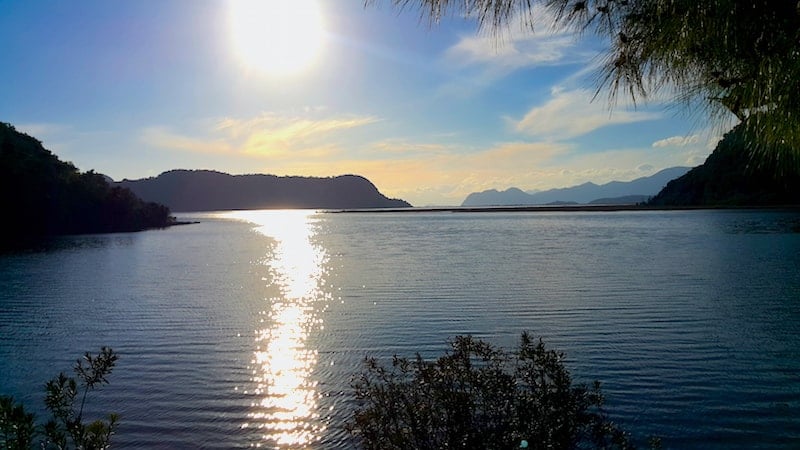Sitting between East and West, drawing elements from both, Turkey has produced its own unique blend of culture, customs and etiquette. From the ancient Hittites to the Ottomans, dozens of civilizations have made Turkey their home, leaving behind them a dazzling historical and cultural heritage.
The Ottoman system was a multi-ethnic state that enabled people within it not to mix with each other and thereby retain separate ethnic and religious identities within the empire (albeit with a dominant Turkish and Southern European ruling class). Upon the fall of the empire after World War I the Turkish Republic adapted a unitary approach, which forced all the different cultures within its borders to mix with each other with the aim of producing a national and cultural identity. This mixing, instead of producing cultural homogenization, instead resulted in many shades of grey as the traditional Muslim cultures of Anatolia collided with the cosmopolitan modernity of Istanbul and the wider West. (Wikipedia)
TIP – You can get out of the tourist zone and blend in with people living in rural areas by joining one of the off-the-beaten-track cultural tours from Dalyan.
But despite its ancient roots, Turkey is a rapidly developing modern state. Born from the ashes of the Ottoman Empire in 1923, the country was transformed by its far-sighted and ambitious first leader Kemal Ataturk. Since his death, the republic has maintained its Western orientation and European aspirations, despite the often-strong counter-current of traditionalism and Islam.
Learning about extremely rich and diverse Turkish culture is a wonderful and enriching experience as you discover the colorful mosaic connecting the modern and ancient worlds of Eastern and Western cultures and traditions.
Tucked away in the heart of Muğla, Gevenez Village offers visitors a window into the past, where Ottoman history, Turkish traditions, and rural charm come together in harmony. With its stone-built houses, cobblestone streets, and timeless atmosphere, Gevenez feels like a living museum—preserving the essence of Ottoman life while adapting to the rhythms of modern-day Turkey. A Glimpse into Ottoman Heritage 🏰 Gevenez Village traces its roots to the Ottoman period, when it served as a thriving rural community. Its architecture, lifestyle, and cultural practices still reflect the influence of the Ottoman Empire, showcasing centuries-old traditions that continue to shape local life. Architectural Marvels That Stand the Test of Time 🏠 Stone Houses with Wooden Balconies: Wander through narrow streets lined with centuries-old homes, featuring intricate woodwork and traditional red-tiled roofs—a hallmark of Ottoman design. Courtyards and Gardens 🌿: Many homes include shaded courtyards adorned with fruit trees and flowering plants, where families gather for meals and celebrations. Mosques and Fountains 🕌: The village’s historic mosques and stone fountains serve as reminders of the spiritual and communal values of Ottoman society. A Cultural Hub Preserving Traditions 🎨 Handcrafted Textiles and Artisan Skills 🧵 Gevenez Village is a haven for artisans who continue to practice traditional crafts passed down through generations. From handwoven textiles to embroidered clothing, these crafts highlight the creativity and craftsmanship of Ottoman culture. Visitors can: Watch artisans at work weaving textiles and creating handmade garments. Purchase authentic souvenirs such as scarves, rugs, and ceramics to take home a piece of Ottoman tradition. Folk Music and Storytelling 🎶 Music and oral traditions play an essential role in village life, preserving stories of love, struggle, and triumph from the Ottoman era. Enjoy live performances of Turkish folk songs during village festivals. Listen to storytellers recount legends passed down through
Tucked away in the heart of Muğla, Gevenez Village offers visitors a window into the past, where Ottoman history, Turkish traditions, and rural charm come together in harmony. With its stone-built houses, cobblestone streets, and timeless atmosphere, Gevenez feels like a living museum—preserving the essence of Ottoman life while adapting to the rhythms of modern-day
Muğla’s timeless charm and cultural richness owe much to the legacy of the Menteşe Beyliği, a powerful Turkmen dynasty that shaped the region’s history, architecture, and identity. From its rise in the 13th century to its enduring influence today, the story of Menteşe Beyliği offers a fascinating glimpse into Turkey’s medieval past. A Dynasty Born from Strength and Vision 🌿 The Menteşe Beyliği was established in 1261 following the weakening of the Seljuk Sultanate of Rum. Named after its founder, Menteşe Bey, the dynasty controlled a vast region stretching from Muğla to the Mediterranean coast, encompassing modern-day Fethiye, Marmaris, and Milas. Strategically located between Anatolia and Mediterranean trade routes, the Menteşe rulers thrived as maritime leaders, blending Turkish traditions with Byzantine and Anatolian influences. This fusion created a cultural legacy that still defines the region’s character today. The Architectural Heritage of Menteşe Beyliği 🕌 Stone Craftsmanship and Ottoman Influence One of the most enduring contributions of the Menteşe Beyliği is its architecture—a testament to the dynasty’s focus on artistry and durability. Mosques and Madrasas: The Firuz Bey Mosque in Milas and İlyas Bey Mosque in Balat stand as architectural marvels, showcasing Seljuk and early Ottoman influences with ornate stone carvings and elegant domes. Caravanserais and Bathhouses: These structures reflect the dynasty’s commitment to supporting trade routes and travelers, cementing Muğla’s role as a center of commerce. Village Design: Villages like Gevenez embody the Ottoman charm preserved through stone houses, arched doorways, and cobblestone streets. A Legacy of Trade and Maritime Power ⚓ The Menteşe rulers established strong trade networks, leveraging their maritime expertise to connect Anatolia with Europe and North Africa. Ports along the Aegean coast became hubs for commerce and cultural exchange, drawing merchants, scholars, and artisans from across the world. This international influence helped shape Muğla’s identity as
Muğla’s timeless charm and cultural richness owe much to the legacy of the Menteşe Beyliği, a powerful Turkmen dynasty that shaped the region’s history, architecture, and identity. From its rise in the 13th century to its enduring influence today, the story of Menteşe Beyliği offers a fascinating glimpse into Turkey’s medieval past. A Dynasty Born
Everyone may be talking about their trips to the Grand Bazaar or the Spice Bazaar in Istanbul, but when it comes to shopping local and eating seasonal, the weekly bazaars you'll see in almost every district will offer you a wonderful way to connect with Turkish culture The weekly “pazar,” which is what the Turks refer to as the local bazaars held outdoors and on the streets throughout cities, towns and villages in Turkey, has long been a steadfast tradition. Purchasing the freshest of seasonal and regional fruit and vegetables has always been of utmost importance to Turkish households whose cuisine is centered on the best quality and time of year for produce. But going to a bazaar can be daunting for any foreigner as it can be crowded, loud and chaotic. So, here are some tips on how to shop wisely at one of Turkey’s traditional bazaars: Local bazaars are generally held in different areas of towns on a specific day of the week. This can change when the dates are in close proximity to religious or national holidays in which case they can be held earlier to ensure everyone is able to get their shopping in. They can either be held in designated open-market areas or on specific streets, rendering that particular neighborhood somewhat inaccessible by vehicle. A scene from a local fruit and vegetable bazaar in Konya, central Turkey, in this undated photo. (iStock Photo) The bazaars here in Turkey can pretty much be your one-stop-shop for the week as there are typically separate sections devoted to selling fruit and vegetables, nuts and dried fruits, cheeses and olives, chickens and eggs, plants, kitchenware and sometimes even accessories, clothes and textiles. If the farmers’ market in a particular region is popular enough, sometimes a separate market
Everyone may be talking about their trips to the Grand Bazaar or the Spice Bazaar in Istanbul, but when it comes to shopping local and eating seasonal, the weekly bazaars you’ll see in almost every district will offer you a wonderful way to connect with Turkish culture The weekly “pazar,” which is what the Turks
Patara is Turkey’s longest beach. You can stroll along this sandy beach for a whopping 12km enjoying the lovely dunes as a backdrop. (Yes, we’ve measured it on Google Maps!) Patara beach is a delight for people who like walking or horseriding on the shore and for sunbathers and swimmers on the lookout for a natural beach, without the crowds, even in high season. You would think that this alone would be reason enough to visit Patara, but that’s not doing justice to the ancient city you cross to reach the beach. In fact, that is where Patara beach got its name, from Patara ancient city. THE MOST LITERAL FORM OF BEACH CULTURE! This phrase fits Patara like a glove. In all honesty, it is hard to tell which is the most impressive, the unspoiled beach, or the ruins adjacent to it. There is a good reason this beach is so pristine: it is a protected area. Twice! The whole beach is protected because of the resident (and protected) Loggerhead Turtles, and also because it is a category one archeological site. Furthermore, the village behind Patara beach, Gelemiş, has not caught the eye of any tour operators yet. The whole atmosphere is low key, with local and family-run businesses offering charming places to stay and locally produced food. The only human-made thing you will find on the beach is a small wooden cafe, run by the Belediye (local government). Apart from that, you’re all set for 12km of untouched beach. Patara Beach In All Its Glory That’s One Glorious Beach! THE BEAUTY OF ARCHEOLOGY: ANCIENT PATARA Why not get a culture shot while getting a tan? Have a walk around the ruins of Patara. You can’t miss them, as you have to drive past them to access the beach.
Patara is Turkey’s longest beach. You can stroll along this sandy beach for a whopping 12km enjoying the lovely dunes as a backdrop. (Yes, we’ve measured it on Google Maps!) Patara beach is a delight for people who like walking or horseriding on the shore and for sunbathers and swimmers on the lookout for a
Everything you need to know about Ramadan: Ramadan is the most sacred month of the year for Muslims During the entire month of Ramadan, Muslims fast every day from dawn to sunset. Many also pray more frequently, give more to charity and study the Quran more deeply. It is a time for families and celebrations. Despite the fact that everyone is fasting, the fun begins after sunset when special meals take place. There is a great community spirit of knowing that everyone is partaking in the same thing. Fasting is one of the five pillars of Islam. Muslims are required to take part every year. Children, the sick or elderly, pregnant and menstruating women are all exempt from fasting. During Ramadan, food and any liquids are not allowed. Chewing gum is also not permitted. Taking medication is not allowed, even without water. Smoking and engaging in any sexual activity is also not permitted. If you slip up during the day it spoils that whole day. To make up for this you can fast later in the year to replace the day or you can provide a meal for a homeless or needy person. During Ramadan, Muslims wake before the first call to prayer. Often a drummer will walk the streets banging his drum to wake everyone up. People then eat and drink as much as possible. This year, because the days are so long, most people will then go back to bed after the first prayer. Muslims are not allowed to eat until the evening call for prayer. The fast is often broken with a small snack. Dates are popular as is soup. A larger meal is often eaten a bit later in the night with friends and family. Muslims follow the lunar calendar for religious celebrations. So, this year
Everything you need to know about Ramadan: Ramadan is the most sacred month of the year for Muslims During the entire month of Ramadan, Muslims fast every day from dawn to sunset. Many also pray more frequently, give more to charity and study the Quran more deeply. It is a time for families and celebrations.
I have always wondered how it is possible that three great religions all come from the same part of the world and the oldest and newest both have fairly strict dietary rules but Christianity seems to have none. Well, it turns out that they are all very similar but Christianity has a bit of a get out. Judaism Animals allowed are those with cloven hooves that chew a cud. In addition, animals must be slaughtered and prepared according to kosher law. Animal Products from non-kosher animals, including eggs, milk, etc. are forbidden. Animal Parts Some parts of kosher animals are forbidden including organ fats and certain nerves and blood vessels. Blood and products made with blood are forbidden. Birds are specifically listed but turkeys were unknown so there is controversy there. Specifically birds of prey and scavengers are forbidden but chickens, domestic ducks and geese are permitted. Cheese must be manufactured by Jews. Fish must have fins and scales that can be scraped off without breaking the skin. Fish must be purchased whole so it can be positively identified or from a reliable kosher fish market. Fruits and Vegetables can be eaten, but must be inspected to assure they contain no bugs. Insects Certain "winged swarming insects" are permitted but the formal identification has been lost over the years so generally all insects are forbidden. Meat / Dairy Meat and dairy can't be eaten together. Utensils used to prepare meat and dairy must be kept separate. There must be a period stated as either three or six hours between eating meat and eating dairy or vice versa. Milk must be witnessed by a Jew, from animal to bottle to make sure it is not mixed non-kosher milk. Pareve are foods that are neither meat nor dairy. Grains, fruits and vegetables. These foods may be served with either meats
I have always wondered how it is possible that three great religions all come from the same part of the world and the oldest and newest both have fairly strict dietary rules but Christianity seems to have none. Well, it turns out that they are all very similar but Christianity has a bit of a
Kandil or the Five Holy Nights are celebrated throughout Turkey each year. The meaning of Kandil comes from the word Candle from the time of Sultan Selim II who lit candles in the Mosques Minarets to mark the holy evenings. The Days of the Islamic Calendar start at sunset, which is why Kandil is celebrated at Night and as the Islamic Calendar is a lunar calendar, the dates of each of these nights changes every year. If you live or holiday in Turkey you probably won’t notice these dates as they are not marked by public holidays. However, you may notice that the Mosques are illuminated to mark these evenings. These holy days and nights are marked by prayer, poems and fasting. Special Foods are often prepared in the homes and greetings are passed around neighbours and families. The Five Holy Nights are: Mevlid Kandili – The Birth of the Prophet Mohammad The day is fixed at the 12th day of the month of Rabi al-Awwal in the Muslim calendar.The Prophet Muhammad was born around A.D. 570 and died in 632. The Mevlid Kandili was first observed around the 13th century and was preceded by a month of celebration. The day is usually celebrated by a sermon, remembrance of the Prophet’s life and mission, gift giving and a feast. On the night that the Holy Prophet was born, Allah, ordered the angels to open all the gates of Heaven and Paradise. It was also during that day that the sun was brighter and more brilliant in its radiance. Regaip Kandili– The Conception of the Prophet Mohammad Regaip marks the beginning of three holy months in the Islamic calendar and is known as the “Beginning of the Three Moons,” Laylat al-Ragha’ib in Arabic, is a holy night in Islam commemorating the conception of the
Kandil or the Five Holy Nights are celebrated throughout Turkey each year. The meaning of Kandil comes from the word Candle from the time of Sultan Selim II who lit candles in the Mosques Minarets to mark the holy evenings. The Days of the Islamic Calendar start at sunset, which is why Kandil is celebrated
What is Hidirellez ? Hidirellez is one of the most important bayrams in Turkey and celebrates the arrival of spring. The period between May 6 and November 8 was classed as summer, called the “Days of Hızır”, and the period between November 8 and May 6 was winter, called the “Days of Kasım”. Therefore, May 6th represents the end of winter and the start of summer, a cause for celebration. On the day of Hidirellez , Prophets Hızır (Al-Khadir) and Ilyas (Elijah) are believed to have met on earth. Hidirellez falls on 6th May for the Gregorian calender and 23rd April (St George’s Day) for the Julian calender. History The ancient Turks had many rituals that celebrated spring and summer. Many of these traditions came from nomads in Central Asia before spreading west into Turkey. Turkey was also greatly influenced by the majority Christian religion of the time. One of those elements was the cult of St. George which has been blended into the cult of Hızır. There is a delicious irony that the far-right groups of the UK spend a large amount of time claiming to be the direct heirs of a Turkish/Syrian soldier! After converting to Islam, the Turkish people have integrated the spring and summer festivals with the Hızır cult. One belief suggests that Hızır has attained immortality by drinking the water of life. He wanders the earth, especially in the spring, and helps people in difficulty. People see him as a source of health and vitality, as the festival takes place in spring, a time of new life. This take place after the three Cemres. Beliefs: Hızır rushes to the aid of people, who are in difficulty and grants peoples’ wishes. He always helps well-meaning, benevolent people. Brings plenty and wealth wherever he stops. He brings remedies to those who
What is Hidirellez ? Hidirellez is one of the most important bayrams in Turkey and celebrates the arrival of spring. The period between May 6 and November 8 was classed as summer, called the “Days of Hızır”, and the period between November 8 and May 6 was winter, called the “Days of Kasım”. Therefore, May 6th
Turkey has witnessed many different religions leaving the country with a wealth of religious tourist attractions. There are the world famous examples, the stunning Blue Mosque and Hagia Sophia, in Istanbul. Both are spectacular and definitely worth visiting but what about the other , lesser known sites? Akdamar Church is an ancient Armenian place of worship, situated on a small island in the middle of Lake Van in Eastern Turkey. Believed to have been built between 915 and 921. Sanliurfa Sanliurfa is known as the city of the prophets. Legend has it that Prophet Abraham may have been born in Urfa and a mosque is situated onthe cave where he was meant to have been born. The Pool of the Sacred Fish is also within Sanliurfa. When King Nimrod tried to kill Abraham by throwing him into a fire God turned the flames into water and the wood into fish. In the province of Sanliurfa, lies Harran, an important area for the Jewish faith. This is the place that Abraham and his family lived for many years. Harran is also the location of the first Muslim university built at the end of the 8th Century. Only a few ruins remain on the site. Konya is one of the most important places for Islam. The birth place of Rumi (or Mevlana). His tomb is situated within the museum dedicated to his teachings. A small mosque on the site is used for the exhibition of ancient Korans and prayer rugs. There is also a box containing the Holy Beard of Muhammad. The followers of Mevlana created the Order of Whirling Dervishes, famous for their whirling dance which is a form of religious meditation. Bursa has many areas religious importance. Ulu Camii (The Great Mosque) is the largest mosque in the city. The city is also an important location for Turkish Jews. There
Turkey has witnessed many different religions leaving the country with a wealth of religious tourist attractions. There are the world famous examples, the stunning Blue Mosque and Hagia Sophia, in Istanbul. Both are spectacular and definitely worth visiting but what about the other , lesser known sites? Akdamar Church is an ancient Armenian place of
Around Dalyan there are many picturesque small villages. Often overlooked by tourists and they remain undiscovered. Despite being close to the thriving tourist town of Dalyan, famous for it's loggerhead turtles, village life revolves around agriculture. They retain their rural charm. In Turkey the definition of a village is a population below 2000. Before the 1950’s 80% of the entire population lived in villages. Today, the actual amount of people living in villages has increased but the percentage has decreased, due to the migration towards larger towns and cities. As in the rest of the world agriculture has become much more mechanised and small landowners and tenants have suffered. These are the families that have generally sought their fortune elsewhere. Larger landowners have inevitably succeeded, machinery making their businesses much more efficient and profitable. Today the extended family remains vital to the survival of the village community. Even though many offspring move away to the cities the extended family can comprise of male elders and a variety of cousins and children. This unit forms a cooperative that will share labour, machinery and even cash. Every village has an elected head. Known as the muhtar. Rural Muhtars The muhtar is the highest elected authority in the village. The tasks of the muhtar compromise of two groups: compulsory tasks, public health, primary education, security and notification of public announcements. Non-compulsory tasks depend upon the demands of the village. Urban Muhtars In each town there may be several neighbourhoods. In large cities the number may exceed a 100 different neighbourhoods. Urban muhtars tend to have less tasks than rural muhtars. They usually provide official copies of birth certificates and ID cards. Villages around Dalyan Villages differ depending on the location. Near the South West coastal towns villages are mainly comprised of small holdings. The
Around Dalyan there are many picturesque small villages. Often overlooked by tourists and they remain undiscovered. Despite being close to the thriving tourist town of Dalyan, famous for it’s loggerhead turtles, village life revolves around agriculture. They retain their rural charm. In Turkey the definition of a village is a population below 2000. Before the
In Turkish and Islamic folklore spring arrives only after the three Cemres have occured. The Cemre are three fireballs that come from Heaven to warm earth at the end of winter. Each cemre happens a week apart and heats one aspect of nature. Dictionary definition - Cemre: means “ember of fire; piece of fire; coal in form of fire” in Arabic and defines warming up and the pile of stones thrown by Muslims at the Mount Mina during pilgrimage. 1. Red-hot piece of coal,live ember 2. Any of three radiations of heat which supposedly fall in succession from the sun into the air,the water, and the earth in February and March. Increase of warmth in February. First Cemre is said to ocur 19-20 February. The first cemre heats the air Second Cemre 26-27 February. The second cemre the water. The third Cemre 5-6 March. The final cemre warms the ground. In meteorological terms cemre is defined as the increase in warmth in February. According to tradition the dropping of cemres result in storms and it snows in many parts of the country during this period. It is accepted that following the third cemre, spring arrives. In old times, people used to divide the year in two seasons as ‘Kasım’ (winter) and ‘Hızır’ (summer); Kasım lasting for 180 days and Hızır for 186 days. Kasım would start on the 8th of November according to the our calendar; the 46th of Kasım would mark the beginning of ‘erbain’, meaning “forty days” and the 86th of Kasım would mark the beginning of ‘hamsin’, meaning “fifty days”. By the end of hamsin, the coldest 90 days of the winter would be over. On the 105th of Kasım (20th of February) the first cemre drops in the air; on the 112th (27th of February) the second cemre drops in the water; and on the 119th (6th of March – 5th of March every four years when February is 29
In Turkish and Islamic folklore spring arrives only after the three Cemres have occured. The Cemre are three fireballs that come from Heaven to warm earth at the end of winter. Each cemre happens a week apart and heats one aspect of nature. Dictionary definition – Cemre: means “ember of fire; piece of fire; coal in
The Yoruk people of Turkey have traditionally been shepherds that migrate between the mountains and the coast. Today many now live in houses but still have dwellings in both areas. Migration In winter, they drive their flocks down to the coast where the weather stays warmer and there is more food available. Whilst in spring and early summer, they head back to the mountain pastures where it is cooler. As a result, in some areas this move will take up to a month. Once the clan elders have decided to move and the day is picked the women will prepare food for the trek, the men will prepare the animals. The majority of the Yoruks will walk the journey but children and the eldery will ride the horses, donkeys or camels. The same route is taken year after year. The knowledge handed down through the generations. Women have a vital role in the Yörük lifestyle. They manage the tents, milk the animals, care for children, the elderly and the sick animals. They spin and dye the wool, making elaborately coloured garments for themselves but also to sell. The men predominantly guard and tend to the flocks. Due to the remote locations they are often accompanied by huge Kangal sheep dogs. These large beasts were originally bred to save the flock from wolves and leopards. That should give you some idea of the size! One of the most impressive sights is a Yoruk wedding. Often the grooms family will carry the dowry through the streets, to the brides family, on the back of a camel. This is followed by much merriment and hours of dancing. You can meet and learn about Yoruk people on our Kapidag trips: Kapidag Trekking and/or Kapidag Camping.
The Yoruk people of Turkey have traditionally been shepherds that migrate between the mountains and the coast. Today many now live in houses but still have dwellings in both areas. Migration In winter, they drive their flocks down to the coast where the weather stays warmer and there is more food available. Whilst in spring
There are numerous Alevi villages around Dalyan. Kemaliye, Marmarli and Fevziye to name a few. Alevi is the term used to describe people and the religion that form the largest minority within Turkey. Alevis take many beliefs from Shia Islam, also Shaman, Sufi and Zoroastrian religions, going back 6,000 years. Their faith includes the worship of Ali, son in law of the Prophet along with God and the Prophet Muhammad. That said there are many conflicting views of what is and isn’t included within the religion. Presumably because this is a way of life as well as a religion, a folk religion. Different Alevi villages in Turkey have different beliefs and practices from each other. Alevis main difference with other Islamic faiths is that they do not pray in mosques. This is due to the fact that Ali was killed in a mosque. Further differences are: Fasting during the Ten Days of Muharram and not during Ramadan Alevis do not prostrate themselves during prayer and do not face Mecca Do not practice the Hajj Use cemevleri that are similar to community town halls, do not go to mosques Alevis "do not have obligatory formal almsgiving, although they have a strong principle of mutual assistance" Do not to attribute great importance to theology Alevis do not pray five times a day Allows the consumption of pork and alcohol. Although this is rarely undertaken Men and women to pray together although women should have their heads covered Alevis have always been isolated within the mainstream communities. Often viewed with suspicion, they have tended to stay in small rural villages, mainly in Anatolia. There have been many persecutions of the Alevi people within Turkey 100 Alevis were killed in Maras in 1978 by members of the extreme right National Action Party. In Sivas in July 1993,
There are numerous Alevi villages around Dalyan. Kemaliye, Marmarli and Fevziye to name a few. Alevi is the term used to describe people and the religion that form the largest minority within Turkey. Alevis take many beliefs from Shia Islam, also Shaman, Sufi and Zoroastrian religions, going back 6,000 years. Their faith includes the worship
This year I moved to Turkey and am therefore spending Christmas in a Muslim country. I have never been very good at Christmas. As a child with divorced parents no matter how hard everyone tries you are painfully aware of the missing parent. As an adult that issue never goes away but you have the added pressure of extended families as well. I am not known for being a party animal so the tradition of getting blind drunk is not really my idea of fun although I tried hard when I was younger! The thing I find odd about Christmas is the way it is so removed from the actual meaning. Don't get me wrong, I don't believe it either but as a Christian celebration it does seem to have lost its way. I understand buying gifts for loved ones but how many families have woken up this morning to horrendous credit card bills that will take 6 months to pay off? One of my favorite Christmas' was when I was made redundant. Not having a definite job to go to meant I only bought presents for my nieces and nephew. Without the pressure of shopping Christmas was lovely, handmade gifts meant so much more. When you really think about it the Father Christmas thing gets even more odd. St Nicholas, born in Patara, and the wise men explain the gift giving but the red suit? The reindeer? So, Christmas in a Muslim country........ whatever the news is saying about Turkey it remains remarkably tolerant. There are Christmas trees and decorations in the supermarkets. This morning Facebook is awash with my Muslim friends wishing everyone a merry Christmas. If you believe the papers then all Muslims hate Christmas. What they always fail to mention is that birth of Jesus is in the
This year I moved to Turkey and am therefore spending Christmas in a Muslim country. I have never been very good at Christmas. As a child with divorced parents no matter how hard everyone tries you are painfully aware of the missing parent. As an adult that issue never goes away but you have the added
My background is horticulture. For as long as I could walk and talk my mother dragged me around gardens, woodlands and parks drumming into the names of plants. I have worked everywhere from rundown nurseries to very high-end garden centres to huge landscaping contracts. Now I live in Turkey, one of the best and most varied floras on the planet. Many years ago, when visiting my mum in Köyçeğiz, we stumbled upon a palm nursery. This was my idea of heaven. All the exotic plants that struggled to survive in England were thriving in the warmth of the Mediterranean sun. As we wandered around one of the volunteers came over. She couldn't speak English, I couldn't speak Turkish. What we soon discovered was that we could speak to each other in Latin. Plant names, proper plant names, are the same the world over. To some it sounds like too much of an effort. What does Latin matter anyway? It's old, outdated and not relevant but the trouble lies in the common name. My common name for a Melianthus major will be different from yours. I lived in Sussex, you live in Wales. Now imagine that you live in wales and I live in Turkey. We have no way of knowing if we are talking about the same plant. Yesterday I went to see an amazing man, again near Köyçeğiz, who breeds citrus. He has a large orchard and grows many beautiful trees. Many things that no one has heard of. Blood limes anyone? Finger limes? Hybrid kumquats and mandarins? The horticultural nerd within me wanted to know everything. While everyone was happy with the magic of the plants I have to understand. I will bore you another day with grafting, hybrids and how new plants are created. The rootstock plants
My background is horticulture. For as long as I could walk and talk my mother dragged me around gardens, woodlands and parks drumming into the names of plants. I have worked everywhere from rundown nurseries to very high-end garden centres to huge landscaping contracts. Now I live in Turkey, one of the best and most
Tree of Life For thousands of years people across the world have been inspired by the Tree of Life. History of the Turkish flora is varied and mythical. Also called the tree of knowledge, tree of immortality or the world tree it is believed to connect heaven and the underworld and all living creations. One of the oldest references of the sacred tree comes from Babylonia. Records dated from as early as 3,000BC depict that the tree had been situated at mouth of the Euphrates River. The roots of the tree extended into the watery underworld which was guarded by Ea, the god of wisdom. He produced the water necessary for the agriculture of the region. The branches of the tree reached up to heaven and the trunk supported the life on earth. The tree of life appears many times in the Old Testament of the Bible and also in the New Testament. The tree first appeared in Genesis as the source of eternal life in the Garden of Eden. It also appears in the last book of the Bible, the Book of Revelation, as part of the new garden of paradise. Revelation 22 begins with a reference to the "pure river of water of life" which proceeds "out of the throne of God". The river seems to feed two trees of life, one "on either side of the river" which "bear twelve manner of fruits" "and the leaves of the tree were for healing of the nations". Persian mythology, centered around a large, sacred tree which bore all the seeds necessary for all trees to grow on earth. Ahriman, who was the source of all of the evil in the world, sent a frog to destroy the tree. To protect the sacred tree, the god Ahura Mazda, the source of
Tree of Life For thousands of years people across the world have been inspired by the Tree of Life. History of the Turkish flora is varied and mythical. Also called the tree of knowledge, tree of immortality or the world tree it is believed to connect heaven and the underworld and all living creations. One
The Islamic holy month, is expected to begin on Monday or Tuesday, depending on where you are situated. The dates of Ramadan, which are determined by the moon, move forward by 10 or 11 days each year in a 33-year cycle, following a lunar calendar instead of the Gregorian calendar. During Ramadan, many Muslims fast between dawn and sunset, which is called “Oruç” in Turkish, abstaining from food, drink, smoking and sex. This year the daily fast could be as long 20 hours in some places, in previous years when Ramadan has taken place in the middle of winter the fast can be as short as eight hours.
The Islamic holy month, is expected to begin on Monday or Tuesday, depending on where you are situated. The dates of Ramadan, which are determined by the moon, move forward by 10 or 11 days each year in a 33-year cycle, following a lunar calendar instead of the Gregorian calendar.
During Ramadan, many Muslims fast between dawn and sunset, which is called “Oruç” in Turkish, abstaining from food, drink, smoking and sex. This year the daily fast could be as long 20 hours in some places, in previous years when Ramadan has taken place in the middle of winter the fast can be as short as eight hours.
Certain beliefs among the members of a society sometimes arise out of fear, sometimes from helplessness and sometimes by chance. These are generally referred to as “superstitions.” These beliefs have existed since the earliest days of mankind. Many of them have no scientific basis and are not linked to any particular religious faith. Although they often appear illogical or unreasonable, they are still an integral part of peoples’ hearts, brains and minds. Popular Beliefs Related to Spirits, Graveyards, Holy Tombs and Visits: - Anyone who cuts down trees near visiting places will be paralyzed. - Anyone who takes anything from a holy tomb will be paralyzed. - It is not good to point out the grave. The fingers of anyone who does so will grow weak and thin. - If an animal puts out its tongue when being sacrificed, it is believed that the owner of the animal will die within the year. - If a child constantly cries, it is believed that someone will die in that house. -When a bunch of flowers is placed on a grave, the spirit of that person returns. He knocks his head on the wood when trying to get up and says, “My God, I am dead”. - The flesh and the bones separate 40-52 days after death. People gather in the dead person’s house and pray together for the flesh and the bones to separate easily. - The spirit of the dead person visits his house seven days following death. - If a shoe turns upside down when being taken off, it is believed that the owner of the shoe will die in the near future. - Seeing dead people in dreams is regarded as an omen for the living. It is believed that a guest will come if a dead person
Certain beliefs among the members of a society sometimes arise out of fear, sometimes from helplessness and sometimes by chance. These are generally referred to as “superstitions.” These beliefs have existed since the earliest days of mankind. Many of them have no scientific basis and are not linked to any particular religious faith. Although they
Two countries, located side by side in the Mediterranean sea. They share a similar climate, the Mediterranean sun, and many of the same landscapes. With overlapping histories, they both have a shared but unique heritage, which is reflected in their cuisine. I have visited both countries and each will forcibly claim to have invented national dishes. I have even heard that the Turks invented pizza, the delicious Pide. However, I am sure the Italians would hotly dispute this point! To understand the similarities you need to understand the history. One of the earliest Greek civilisations were the Cretan Minoans. The Minoans grew the first grains and made very rustic wine from native wild grapes. Although the Greeks cannot claim to have invented bread it is possible that they first thought of the oven to bake it in. Following on from bread the Greeks and Turks also began to cultivate orchards of fruit and nut trees, olive groves and kept bees for honey. Due to its location Turkey has always been influenced by the Middle East and Asia. The silk road ran straight through Anatolia, bringing rice and sweets from Persia and shish kebabs from the travelling nomads. Thanks to it’s size and diversity Turkey remains one of the few self-sustaining countries in the world. Many dishes are virtually the same in Greece and Turkey. They both have a delicious chicken soup made with lemon. The Turks often add yoghurt to theirs. Definitely a Turkish invention! While the Greeks add more herbs, marjoram and oregano. Both make salads from a wide variety of fresh vegetables but the Greeks will add feta cheese the Turks will spice it up with their love of chillis. Both enjoy stuffed vine leaves. Dolma in Turkish, dolmades in Greek. The Turkish version will often contain dried
Two countries, located side by side in the Mediterranean sea. They share a similar climate, the Mediterranean sun, and many of the same landscapes. With overlapping histories, they both have a shared but unique heritage, which is reflected in their cuisine. I have visited both countries and each will forcibly claim to have invented national
Even though I was born and raised in Turkey, I have lived more than half of my adult life outside Turkey. Even after settling in Turkey I have always worked in positions that I would interact with foreigners, probably more than i did with Turks. I think this experiences, which I have summarised on about us section, has helped me a lot with my venture in establishing a successful tour company in Dalyan. I find it easy to relate with other cultures and also i am able to step back and look at Turkish culture through other people's eyes. I have met numerous great friends living in Dalyan in past 4 years and a lot of times i get questions about the Turkish culture. I get questions such as whether if it was acceptable to act in certain way, what should they do if they were invited to someones house and random comments about things they find different in Turkey in general. Lovely English couple Malcolm and Catherine making friends with another lovely Turkish couple Ercan and Fatma on one of our Saklikent Trips It is great to know people are interested in your culture and they would like to learn more so i am always pleased to answer these questions at my best ability. During these conversations I have also realised that there were some misconceptions about Turkish culture, some were excessively sensitive and some doesn't even exist in our culture. Therefore I decided to write my own version of "Turkish Culture and Customs" post, addressing especially to those points which I find to be not so true. I should also clarify that when I say "Turk" or "Turkish", I don't refer to any particular race, I mean Turkish people, regarding of their race, who was born and raised in Turkey. After decades of
Even though I was born and raised in Turkey, I have lived more than half of my adult life outside Turkey. Even after settling in Turkey I have always worked in positions that I would interact with foreigners, probably more than i did with Turks. I think this experiences, which I have summarised on about




